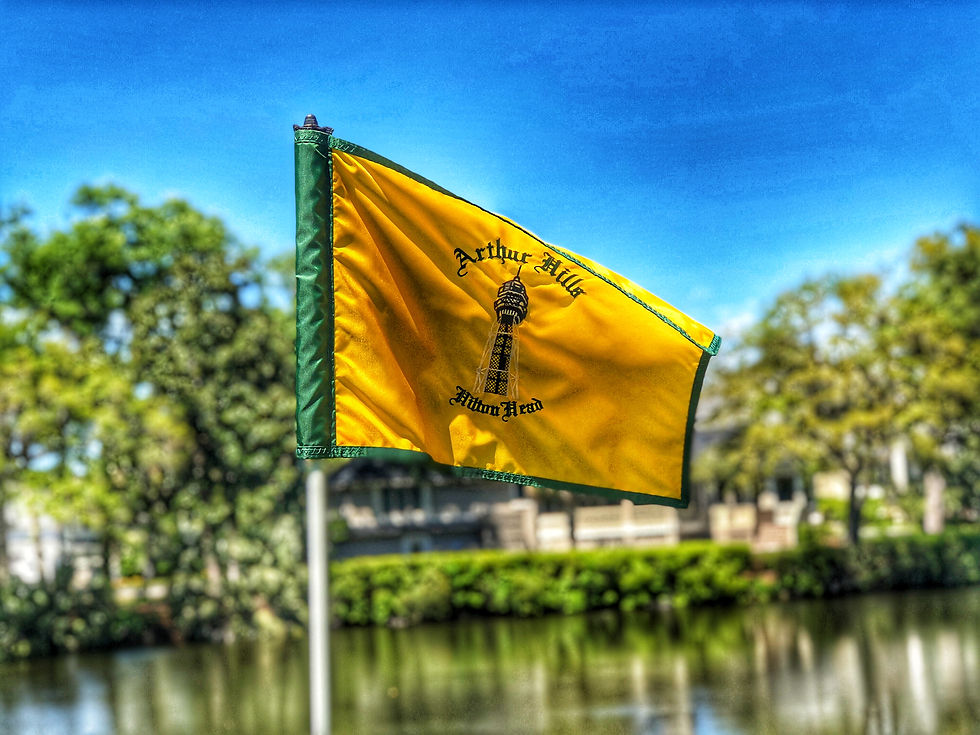Catching up with Arthur Hills, Renowned Golf Course Architect Sits Down for an Interview
- Palmetto Dunes

- Aug 13, 2018
- 3 min read

As “the name” adorning one of our three world-renowned golf courses, architect Arthur Hills has played a major role in the 50-year history of Palmetto Dunes Oceanfront Resort.
Today, Hills is the only one of our design trio still living: Robert Trent Jones Sr., passed away in 2000 at age 93 and George Fazio in 1986 at the age of 73.
Opened in 1986, the Arthur Hills Course at Palmetto Dunes is a mainstay among the South Carolina "Best You Can Play" and was previously named the Palmetto State’s “Course of the Year.”

The 88-year-old Hills has spent a career designing golf courses in North America and Europe from his home base in Ohio. He’s designed more than 200 new golf courses around the world and has been called upon to refine or renovate more than 125 others including some of the country’s most renowned clubs such as Congressional, Oakmont, Oakland Hills and Inverness. Twenty-eight Hills-designed courses have been selected as USGA, PGA, LPGA, NCAA and PGA of America tournament venues.

Now the Chairman Emeritus of Hills/Forrest/Smith Golf Course Architects, which he founded in 1966, Hills resides in Sylvania outside of Toledo. There, he’s immortalized with a signed bun at the renowned Tony Packo’s Hungarian Hot Dog restaurant. (When you have your name attached to a couple hundred golf courses, you’re kind of a big deal.)
A proficient golfer back in his day, Hills was the captain of his Michigan State golf team and won the 1950 Ann Arbor City Championship. He was voted into the Ohio Golf Hall of Fame in 1993.
For the record, at his age Hills can still drive the ball about 180 yards.

Down-to-earth, personable, friendly and willing to share his wisdom, the semi-retired Hills is a Fellow and Past President of the American Society of Golf Course Architects (ASGCA). He was voted the “Architect of the Year” in 1991 and 1998, and was Boardroom Magazine’s “Architect of the Year” in 2002.
As he prepares to renovate one of his signature courses, Shaker Run Golf Club in Lebanon, Ohio, Hills recently spoke with the Cincinnati Enquirer:
"The main goal when I would start designing a golf course was to make it playable for all of those who might play it, from the best golfers to the higher-handicap golfers who might shoot 100 or 110," Hills said. "Probably the elements that go into that are length, where you can have a variety of tees, bunkering, where you can make the bunkers more or less severe, and course conditioning, a big factor for many people."
Like all businesses, golf course design has evolved. There aren't as many new courses being built, so there are more renovations and redesigns. Technology and equipment have also steered the profession.
“There’s a tendency to make the courses longer,” Hills said. “You kind of need to make the golf courses 7,500 plus or minus yards from the way back (back tee). Fifty years ago, 6,500 yards was a long golf course.”
His roundabout start in the golf business came when an initial idea to start a family greenhouse didn't work out. Rather than plow snow in the landscaping off-season, he drew up pristine holes for golfers to play when the weather would break.
"I decided I wanted to differentiate from all of us guys that had a truck, a trailer and a bunch of equipment," Hills said.
“(Today) it’s a privilege to go back and improve, upgrade, tweak or modify,” he said.
“I’ve been very lucky in getting into this career,” Hills said. “Every day is an interesting day in the golf course design business. Not only in designing the golf courses, but also with some guys that are very entrepreneurial.”

On the occasion of our 50th Anniversary, all of us at Palmetto Dunes Oceanfront Resort send our own Arthur Hills a hearty, “Cheers!”




Comments